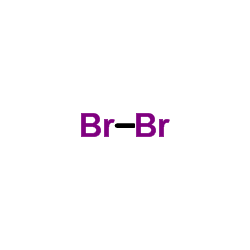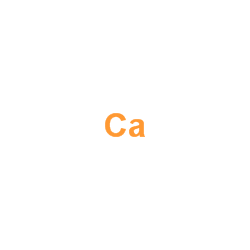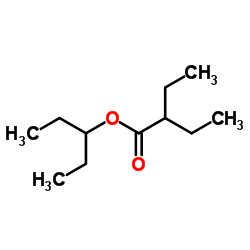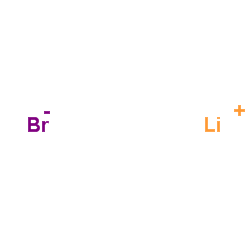Calcium bromide

Calcium bromide structure
|
Common Name | Calcium bromide | ||
|---|---|---|---|---|
| CAS Number | 7789-41-5 | Molecular Weight | 199.88600 | |
| Density | 3.353 g/mL at 25 °C(lit.) | Boiling Point | 806-812°C | |
| Molecular Formula | Br2Ca | Melting Point | 730°C | |
| MSDS | Chinese USA | Flash Point | 806-812°C | |
| Symbol |

GHS05 |
Signal Word | Danger | |
| Name | calcium dibromide |
|---|---|
| Synonym | More Synonyms |
| Density | 3.353 g/mL at 25 °C(lit.) |
|---|---|
| Boiling Point | 806-812°C |
| Melting Point | 730°C |
| Molecular Formula | Br2Ca |
| Molecular Weight | 199.88600 |
| Flash Point | 806-812°C |
| Exact Mass | 197.79900 |
| InChIKey | WGEFECGEFUFIQW-UHFFFAOYSA-L |
| SMILES | [Br-].[Br-].[Ca+2] |
Synonym:Calcium dibromide dihydrate Section 2 - COMPOSITION, INFORMATION ON INGREDIENTS
Risk Phrases: None Listed. Section 3 - HAZARDS IDENTIFICATION EMERGENCY OVERVIEW
The toxicological properties of this material have not been fully investigated.Hygroscopic (absorbs moisture from the air). Potential Health Effects Eye: May cause eye irritation. The toxicological properties of this material have not been fully investigated. Skin: May cause skin irritation. The toxicological properties of this material have not been fully investigated. Ingestion: Ingestion of large amounts may cause gastrointestinal irritation. The toxicological properties of this substance have not been fully investigated. Inhalation: May cause respiratory tract irritation. The toxicological properties of this substance have not been fully investigated. Chronic: No information found. Section 4 - FIRST AID MEASURES Eyes: Flush eyes with plenty of water for at least 15 minutes, occasionally lifting the upper and lower eyelids. Get medical aid. Skin: Flush skin with plenty of water for at least 15 minutes while removing contaminated clothing and shoes. Get medical aid if irritation develops or persists. Wash clothing before reuse. Ingestion: Do not induce vomiting. If victim is conscious and alert, give 2-4 cupfuls of milk or water. Never give anything by mouth to an unconscious person. Get medical aid. Inhalation: Remove from exposure and move to fresh air immediately. If not breathing, give artificial respiration. If breathing is difficult, give oxygen. Get medical aid if cough or other symptoms appear. Notes to Physician: Section 5 - FIRE FIGHTING MEASURES General Information: As in any fire, wear a self-contained breathing apparatus in pressure-demand, MSHA/NIOSH (approved or equivalent), and full protective gear. During a fire, irritating and highly toxic gases may be generated by thermal decomposition or combustion. Extinguishing Media: Use water spray, dry chemical, carbon dioxide, or appropriate foam. Section 6 - ACCIDENTAL RELEASE MEASURES General Information: Use proper personal protective equipment as indicated in Section 8. Spills/Leaks: Vacuum or sweep up material and place into a suitable disposal container. Clean up spills immediately, observing precautions in the Protective Equipment section. Avoid generating dusty conditions. Provide ventilation. Section 7 - HANDLING and STORAGE Handling: Wash thoroughly after handling. Wash hands before eating. Use with adequate ventilation. Minimize dust generation and accumulation. Avoid contact with eyes, skin, and clothing. Keep container tightly closed. Avoid ingestion and inhalation. Storage: Store in a cool, dry, well-ventilated area away from incompatible substances. Store protected from moisture. Section 8 - EXPOSURE CONTROLS, PERSONAL PROTECTION Engineering Controls: Facilities storing or utilizing this material should be equipped with an eyewash facility and a safety shower. Use adequate ventilation to keep airborne concentrations low. Exposure Limits CAS# 7789-41-5: CAS# 22208-73-7: Personal Protective Equipment Eyes: Wear appropriate protective eyeglasses or chemical safety goggles as described by OSHA's eye and face protection regulations in 29 CFR 1910.133 or European Standard EN166. Skin: Wear appropriate protective gloves to prevent skin exposure. Clothing: Wear appropriate protective clothing to prevent skin exposure. Respirators: Follow the OSHA respirator regulations found in 29 CFR 1910.134 or European Standard EN 149. Use a NIOSH/MSHA or European Standard EN 149 approved respirator if exposure limits are exceeded or if irritation or other symptoms are experienced. Section 9 - PHYSICAL AND CHEMICAL PROPERTIES Physical State: Solid Color: white to off-white Odor: Odorless. pH: Not available. Vapor Pressure: Not available. Viscosity: Not available. Boiling Point: Not available. Freezing/Melting Point: Not available. Autoignition Temperature: Not available. Flash Point: Not applicable. Explosion Limits, lower: Not available. Explosion Limits, upper: Not available. Decomposition Temperature: Solubility in water: soluble in alcohol and acetone Specific Gravity/Density: Molecular Formula: Br2Ca.2H2O Molecular Weight: 235.93 Section 10 - STABILITY AND REACTIVITY Chemical Stability: Stable under normal temperatures and pressures. Conditions to Avoid: Dust generation, excess heat, exposure to moist air or water. Incompatibilities with Other Materials: Sulfuric acid, isocyanates. Hazardous Decomposition Products: Irritating and toxic fumes and gases, hydrogen bromide. Hazardous Polymerization: Will not occur. Section 11 - TOXICOLOGICAL INFORMATION RTECS#: CAS# 7789-41-5: EV9328000 CAS# 22208-73-7 unlisted. LD50/LC50: CAS# 7789-41-5: Oral, rat: LD50 = 4100 mg/kg. CAS# 22208-73-7. Carcinogenicity: Calcium bromide (CaBr2) - Not listed by ACGIH, IARC, or NTP. Calcium bromide dihydrate - Not listed by ACGIH, IARC, or NTP. Other: See actual entry in RTECS for complete information. Section 12 - ECOLOGICAL INFORMATION Section 13 - DISPOSAL CONSIDERATIONS Dispose of in a manner consistent with federal, state, and local regulations. Section 14 - TRANSPORT INFORMATION IATA Shipping Name: Not regulated. Hazard Class: UN Number: Packing Group: IMO Shipping Name: Not regulated. Hazard Class: UN Number: Packing Group: RID/ADR Shipping Name: Not regulated. Hazard Class: UN Number: Packing group: Section 15 - REGULATORY INFORMATION European/International Regulations European Labeling in Accordance with EC Directives Hazard Symbols: Not available. Risk Phrases: Safety Phrases: S 24/25 Avoid contact with skin and eyes. S 28A After contact with skin, wash immediately with plenty of water. S 37 Wear suitable gloves. S 45 In case of accident or if you feel unwell, seek medical advice immediately (show the label where possible). WGK (Water Danger/Protection) CAS# 7789-41-5: 1 CAS# 22208-73-7: No information available. Canada CAS# 7789-41-5 is listed on Canada's DSL List. CAS# 7789-41-5 is not listed on Canada's Ingredient Disclosure List. CAS# 22208-73-7 is not listed on Canada's Ingredient Disclosure List. US FEDERAL TSCA CAS# 7789-41-5 is listed on the TSCA inventory. CAS# 22208-73-7 is not listed on the TSCA inventory. It is for research and development use only. SECTION 16 - ADDITIONAL INFORMATION N/A |
CHEMICAL IDENTIFICATION
HEALTH HAZARD DATAACUTE TOXICITY DATA
MUTATION DATA
|
| Symbol |

GHS05 |
|---|---|
| Signal Word | Danger |
| Hazard Statements | H318 |
| Precautionary Statements | P280-P305 + P351 + P338 |
| Hazard Codes | Xi:Irritant |
| Risk Phrases | R38 |
| Safety Phrases | S22-S24/25 |
| RIDADR | NONH for all modes of transport |
| WGK Germany | 2 |
| RTECS | EV9328000 |
| HS Code | 2827590000 |
| Precursor 7 | |
|---|---|
| DownStream 5 | |
| HS Code | 2827590000 |
|---|
|
Pulsed Discharge Helium Ionization Detector for Highly Sensitive Aquametry.
Anal. Sci. 32 , 177-82, (2016) Trace moisture quantitation is crucial in medical, civilian and military applications. Current aquametry technologies are limited by the sample volume, reactivity, or interferences, and/or instrument ... |
|
|
Inhibition of polybrominated dibenzo-p-dioxin and dibenzofuran formation from the pyrolysis of printed circuit boards.
Environ. Sci. Technol. 41(3) , 957-62, (2007) Waste printed circuit boards containing brominated flame retardants were pyrolyzed in a high-temperature melting system to observe the formation behaviors of polybrominated dibenzo-p-dioxins (PBDDs) a... |
|
|
Conversion of CHF3 to CH2=CF2 via reaction with CH4 and CaBr2.
Environ. Sci. Technol. 42(15) , 5795-9, (2008) Reaction of CHF3 and CH4 over CaBr2 was investigated at 400-900 degrees C as a potential route for transforming the highly potent greenhouse gas, CHF3, into the valuable product CH2=CF2. The homogeneo... |
| MFCD00010902 |
| calcium bromide |
| EINECS 232-164-6 |
| Calcium bromide, ultra dry |
 CAS#:7726-95-6
CAS#:7726-95-6 CAS#:75-20-7
CAS#:75-20-7 CAS#:7440-70-2
CAS#:7440-70-2 CAS#:67530-61-4
CAS#:67530-61-4 CAS#:10035-10-6
CAS#:10035-10-6 CAS#:74-96-4
CAS#:74-96-4 CAS#:75-25-2
CAS#:75-25-2 CAS#:3511-90-8
CAS#:3511-90-8 CAS#:7550-35-8
CAS#:7550-35-8 CAS#:7647-15-6
CAS#:7647-15-6 CAS#:54732-63-7
CAS#:54732-63-7